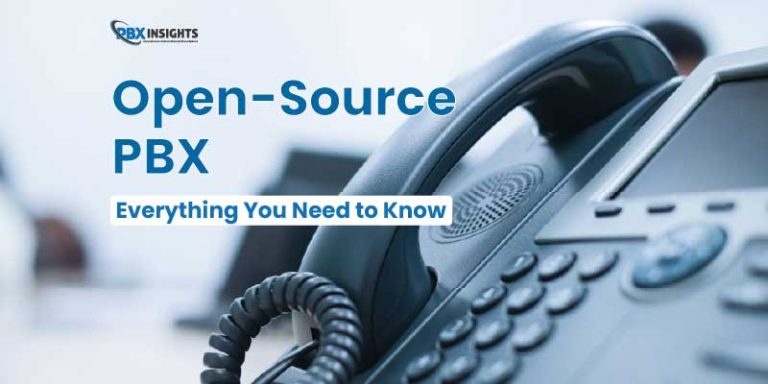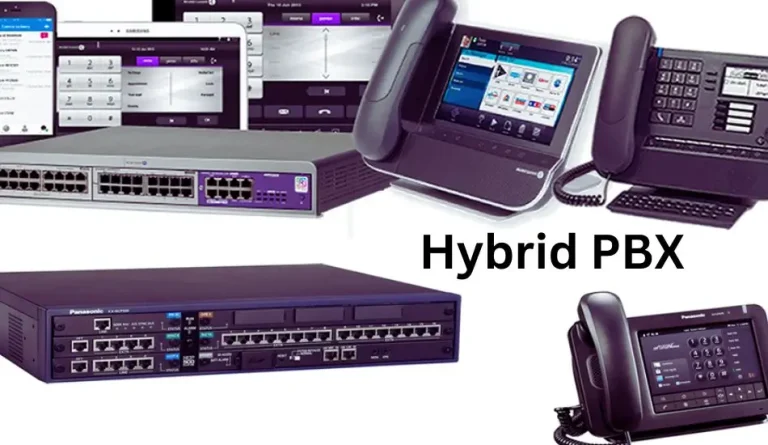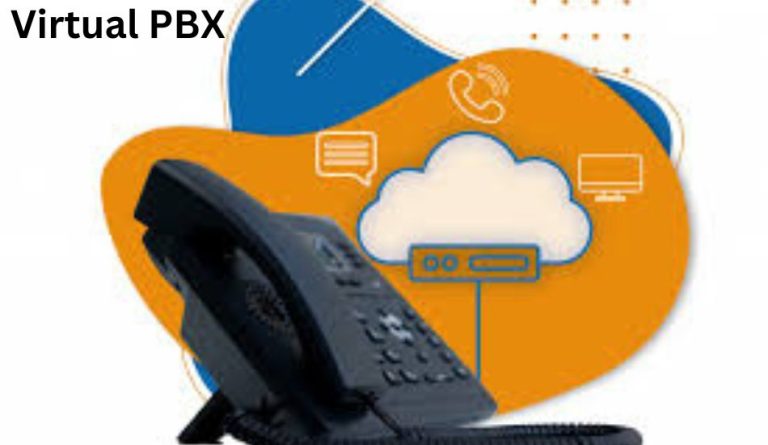What Is a PBX Phone System? Features, Benefits
Introduction to PBX PBX, which stands for Private Branch Exchange, is a telephonic system that assists in handling calls internally within a company. It enables businesses to efficiently route calls between internal users and connect them to external lines. Call forwarding, voicemail, and automated attendants are just a few of the functions that PBX systems…
Introduction to PBX
PBX, which stands for Private Branch Exchange, is a telephonic system that assists in handling calls internally within a company. It enables businesses to efficiently route calls between internal users and connect them to external lines. Call forwarding, voicemail, and automated attendants are just a few of the functions that PBX systems offer to improve productivity and communication.
Knowing PBX is essential as businesses look to enhance their communication tactics. Modern PBX solutions, which frequently integrate VoIP technology, replace older phone systems in many enterprises. This change makes more flexibility and cost savings possible, particularly for expanding businesses.
PBX systems’ development indicates more general developments in telecommunications and technology. Businesses can improve customer relations and streamline operations by using PBX knowledge to make well-informed decisions about their communication infrastructure.
How does a PBX phone system work?
PBX systems boast a long-standing history shaped by technological improvements and commercial demands. Grasping their development and distinctions between conventional and IP systems offers insight into their present-day uses.
The devices employed in a PBX differ based on the system’s complexity—for instance, whether it is a traditional PBX connected to copper telephone landlines, whether the PBX supports a combination of analogue and digital lines, whether it utilizes voice over IP (VoIP) hosted on-premises, or whether it’s a cloud-hosted PBX system. Each type is detailed below.
Traditional PBX phone systems use landline copper-based phone lines that are connected to a PBX unit once they enter a business’s building.
This unit houses telephony switches that facilitate the distribution of calls to various phones within an office and allow those phones to access a limited number of external lines—trunk lines.
An IP PBX operates using digital phone signals, rather than analogue landlines, to transmit calls. Since a user can utilize Ethernet cables to connect phones instead of conventional telephone cables, no rewiring is essential. IP PBX systems may also be hosted by managed service providers. Although hosted systems incur monthly charges, there are reduced end-user hardware expenses connected to their use.
Smaller PBX phone system, commonly known as virtual PBXs, provide hosted services but with less functionality, which is more suitable for small enterprises. Hosted PBX services are offered by several providers, such as Nextiva, Vonage, and RingCentral.
Types of PBX phone system
There are various types of PBX systems, each designed to meet particular corporate requirements and technology developments. An outline of the most prevalent kinds is provided below:
1. Conventional PBX
Multiple phone lines inside an organisation are connected by traditional PBX systems, which are hardware-based solutions.
Important Features and Components: Copper cable and phone switches are examples of physical hardware used in these systems. Internal call routing eliminates the requirement for external phone lines for each user.
Benefits: Dependable and internet-independent.
Limitations include a lack of contemporary capabilities like video conferencing, high setup and maintenance expenses, and restricted scalability.
IP PBX
Internet Protocol PBXs, or IP PBXs, route calls using technology based on the internet.
Explanation: Unlike traditional systems, IP PBX relies on VoIP (Voice over Internet Protocol) to transmit calls.
Benefits: cost-effective, supports multimedia communication (voice, video, and text), and is highly scalable.
PBX hosted
Cloud-based solutions run by outside vendors are known as hosted PBX systems.
Cloud-based solutions are a practical choice because they eliminate the requirement for hardware on-site.
Benefits and Drawbacks: Although hosted PBX provides flexibility and cheaper initial expenses, it is highly dependent on a reliable internet connection.
Virtual PBX Remote teams or small enterprises benefit greatly from virtual PBX.
Key Differences: It is a condensed form of hosted PBX that prioritises call control over a wide range of functionality.
Use Cases: Virtual PBX is ideal for freelancers or startups that require simple communication solutions.
Key Features of PBX Phone System
PBX systems come packed with features designed to enhance communication efficiency:
Benefits of PBX for Businesses
Implementing a PBX system provides various benefits:
- Cost-Efficiency: Lowers expenses by decreasing the necessity for several outside phone lines.
- Enhanced Collaboration: Promotes effective internal communication.
- Improved Customer Service: Functions such as auto-attendant guarantee that customer calls are managed professionally.
- Scalability for Growth: PBX systems are capable of growing with your business, supporting additional users and functionalities.
Challenges and Limitations of PBX
Despite its benefits, PBX systems are not without challenges:
- Initial Setup Costs: Especially for traditional PBX, the upfront investment can be significant.
- Internet Dependency: Hosted and IP PBX require a stable internet connection.
- Maintenance Needs: Traditional PBX systems need regular maintenance to function optimally.
Comparison: PBX vs. VoIP
While PBX and VoIP often overlap, they are distinct technologies:
- Key Similarities: Both facilitate business communication and offer advanced features like call routing and voicemail.
- Distinct Differences: PBX systems can be standalone, while VoIP relies entirely on internet-based communication.
- Choosing the Right Solution: Businesses with strong internet connectivity may lean toward VoIP or IP PBX, while traditional PBX might suit areas with limited internet infrastructure.
Future of PBX phone system
PBX systems are continually evolving to meet modern business demands:
- Trends in PBX Technology: Integration with AI for advanced call management and analytics.
- Role of AI and Automation: Features like chatbots and predictive dialing enhance efficiency.
- Unified Communication Platforms: Combining PBX with video, messaging, and collaboration tools.
How to Choose the Right PBX System
Selecting a PBX system depends on your business needs:
- Factors to Consider: Budget, business size, and technical requirements.
- Questions to Ask: Does the provider offer scalability? What are the support and maintenance options?
- Checklist for Decision-Making: Prioritise features, compatibility, and ease of use.
Setting Up a PBX System/How to Start PBX?
Implementing a PBX system involves careful planning:
- Steps for Implementation: Assess needs, choose the right provider, and train employees.
- Common Pitfalls to Avoid: Skipping proper training or underestimating future needs.
- Tips for Seamless Integration: Work with experienced providers and ensure robust support.
Conclusion
The foundation of contemporary commercial communication is PBX Phone systems. They improve customer service, expedite processes, and adjust to shifting demands. Investing in the appropriate system can greatly increase your company’s efficiency, regardless of whether you choose hosted, IP, or classic PBX.








3 Comments